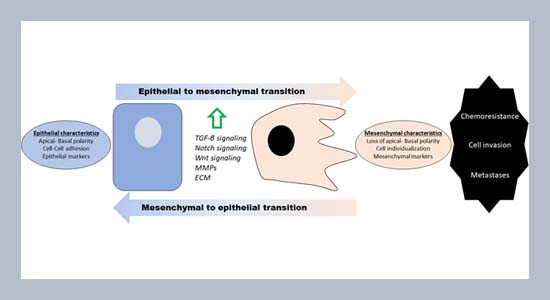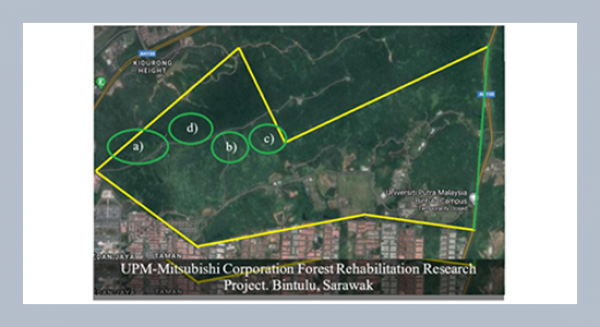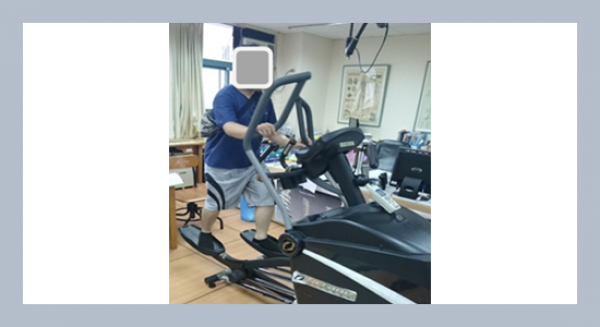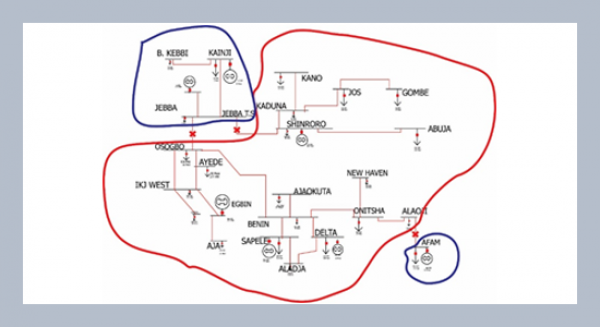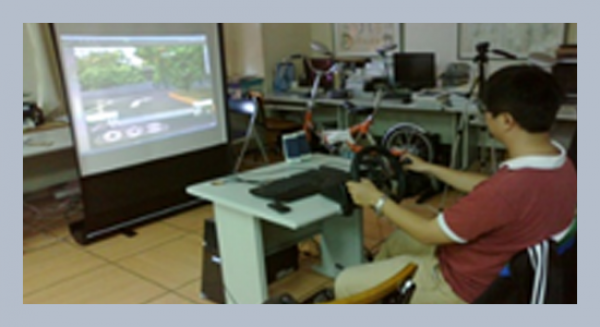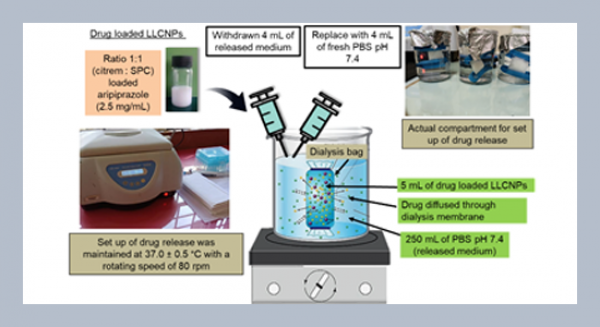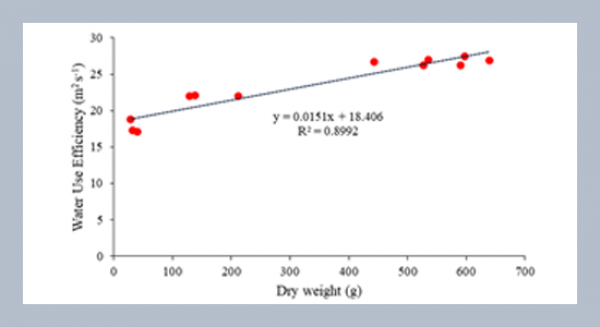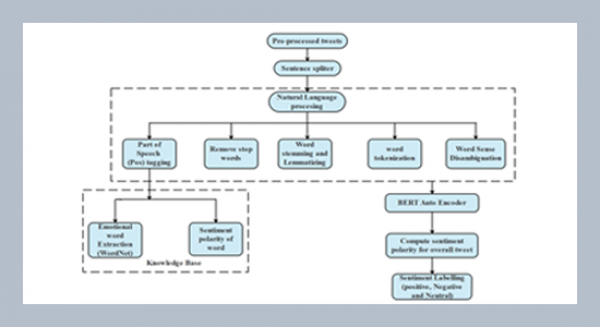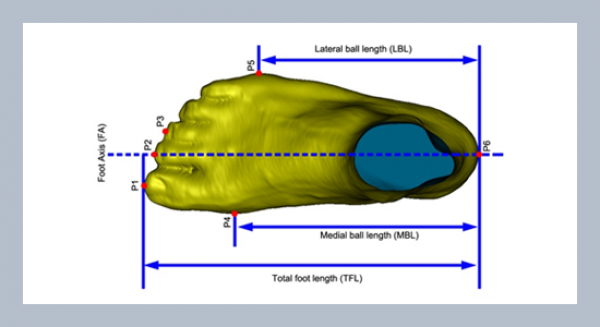REFERENCES
- Abu Bakar, M. F., Saifudin, A., Cao, P., Esa, N. M. 2021. Herbal Medicine for Prevention and Therapy in Breast Cancer. Evidence-Based Complementary and Alternative Medicine, 9760586.
- Amaral, R., dos Santos, S. A., Andrade, L. N., Severino, P., Carvalho, A. A. 2019. Natural products as treatment against cancer: a historical and current vision. Clinical Oncology, 4, 1562.
- Chen, B., Ning, M., Yang, G. 2012. Effect of paeonol on antioxidant and immune regulatory activity in hepatocellular carcinoma rats. Molecules, 17, 4672–4683.
- Chen, J.-X., Cheng, C.-S., Chen, J., Lv, L.-L., Chen, Z.-J., Chen, C., Zheng, L, 2020. Cynanchum paniculatum and its major active constituents for inflammatory-related diseases: a review of traditional use, multiple pathway modulations, and clinical applications. Evidence-Based Complementary and Alternative Medicine, 7259686.
- Cheng, C.-S., Chen, J.-X., Tang, J., Geng, Y.-W., Zheng, L., Lv, L.-L., Chen, L. Y., Chen, Z. 2020. Paeonol inhibits pancreatic cancer cell migration and invasion through the inhibition of TGF-β1/smad signaling and epithelial-mesenchymal-transition. Cancer Management and Research, 12, 641–651.
- Cho, J. A., Park, H., Lim, E. H., Lee, K. W. 2012. Exosomes from breast cancer cells can convert adipose tissue-derived mesenchymal stem cells into myofibroblast-like cells. International Journal of Oncology, 40, 130–138.
- Dai, X., Cheng, H., Bai, Z., Li, J. 2017. Breast cancer cell line classification and its relevance with breast tumor subtyping. Journal of Cancer, 8, 3131–3141.
- Deryugina, E. I., Quigley, J. P. 2012. Cell surface remodeling by plasmin: a new function for an old enzyme. Journal of Biomedicine and Biotechnology, 564259.
- Duffy, M. J., McGowan, P. M., Harbeck, N., Thomssen, C., Schmitt, M. 2014. uPA and PAI-1 as biomarkers in breast cancer: validated for clinical use in level-of-evidence-1 studies. Breast Cancer Research, 16, 1–10.
- Efferth, T., Kuete, V. 2010. Cameroonian medicinal plants: pharmacology and derived natural products. Frontiers in Pharmacology, 1: 123.
- Ethier, S. P., Mahacek, M. L., Gullick, W. J., Frank, T. S., Weber, B. L. 1993. Differential isolation of normal luminal mammary epithelial cells and breast cancer cells from primary and metastatic sites using selective media. Cancer research, 53, 627–635.
- Fedele, M., Cerchia, L., Chiappetta, G. 2017. The epithelial-to-mesenchymal transition in breast cancer: focus on basal-like carcinomas. Cancers, 9, 134.
- Felipe Lima, J., Nofech-Mozes, S., Bayani, J., Bartlett, J. 2016. EMT in breast carcinoma-a review. Journal of Clinical Medicine, 5, 65.
- Ferraiuolo, R.-M., Wagner, K.-U. 2019. Regulation and new treatment strategies in breast cancer. Journal of Life Sciences (Westlake Village, Calif.), 1, 23.
- Fu, J., Yu, L., Luo, J., Huo, R., Zhu, B. 2018. Paeonol induces the apoptosis of the SGC‑7901 gastric cancer cell line by downregulating ERBB2 and inhibiting the NF‑κB signaling pathway. International Journal of Molecular Medicine, 42, 1473–1483.
- Fu, M., Wang, D., Hu, X., Guo, M. 2015. Chemical constituents from Cynanchum paniculatum. Journal of Chinese Medicinal Materials, 38, 97–100.
- Giordano, C., La Camera, G., Gelsomino, L., Barone, I., Bonofiglio, D., Andò, S., Catalano, S. 2020. The biology of exosomes in breast cancer progression: Dissemination, immune evasion and metastatic colonization. Cancers, 12, 2179.
- Gonzalez, D. M., Medici, D. 2014. Signaling mechanisms of the epithelial-mesenchymal transition. Science Signaling, 7, 8.
- Jeibouei, S., Akbari, M. E., Kalbasi, A., Aref, A. R., Ajoudanian, M., Rezvani, A., Zali, H. 2019. Personalized medicine in breast cancer: pharmacogenomics approaches. Pharmacogenomics and Personalized Medicine, 12, 59.
- Kala, C. P., Dhyani, P. P., & Sajwan, B. S. 2006. Developing the medicinal plants sector in northern India: challenges and opportunities. Journal of Ethnobiology and Ethnomedicine, 2, 1–15.
- Kast, K., Link, T., Friedrich, K., Petzold, A., Niedostatek, A., Schoffer, O., Werner, C., Klug, S.J., Werner, A., Gatzweiler, A. 2015. Impact of breast cancer subtypes and patterns of metastasis on outcome. Breast Cancer Research and Treatment, 150, 621–629.
- Kim, C.S., Oh, J.Y., Choi, S.U., Lee, K.R. 2013. Chemical constituents from the roots of Cynanchum paniculatum and their cytotoxic activity. Carbohydrate Research, 381, 1–5.
- Kong, D., Chen, L., Huang, W., Zhang, Z., Wang, L., Zhang, F., Zheng, S. 2020. Combined therapy with ligustrazine and paeonol mitigates hepatic fibrosis through destroying mitochondrial integrity of stellate cell. American Journal of Translational Research, 12, 1255.
- Kong, D., Zhang, F., Wei, D., Zhu, X., Zhang, X., Chen, L., Lu, Y., Zheng, S. 2013. Paeonol inhibits hepatic fibrogenesis via disrupting nuclear factor-κB pathway in activated stellate cells: In vivo and in vitro studies. Journal of Gastroenterology and Hepatology, 28, 1223–1233.
- Lamartiniere, C. A. 2000. Protection against breast cancer with genistein: a component of soy. The American Journal of Clinical Nutrition, 71, 1705S–1707S.
- Lamouille, S., Xu, J., Derynck, R. 2014. Molecular mechanisms of epithelial–mesenchymal transition. Nature Reviews Molecular cell biology, 15, 178–196.
- Laskar, Y.B., Lourembam, R.M., Mazumder, P.B. 2020. Herbal Remedies for Breast Cancer Prevention and Treatment, Medicinal Plants-Use in Prevention and Treatment of Diseases. IntechOpen.
- Li, M., Tan, S.Y., Zhang, J., You, H.X. 2013. Effects of paeonol on intracellular calcium concentration and expression of RUNX3 in LoVo human colon cancer cells. Molecular Medicine Reports, 7, 1425–1430.
- Li, N., Fan, L.-L., Sun, G.-P., Wan, X.-A., Wang, Z.-G., Wu, Q., Wang, H. 2010. Paeonol inhibits tumor growth in gastric cancer in vitro and in vivo. World Journal of Gastroenterology, 16, 4483.
- Li, T. S., 2006. Taiwanese native medicinal plants: phytopharmacology and therapeutic values. Routledge: Taylor & Franccis group
- Li, Y.-j., Bao, J.-X., Xu, J.-w., Murad, F., Bian, K. 2010. Vascular dilation by paeonol-a mechanism study. Vascular Pharmacology, 53, 169–176.
- Liao, W.-Y., Tsai, T.-H., Ho, T.-Y., Lin, Y.-W., Cheng, C.-Y., Hsieh, C.-L. 2016.
Neuroprotective effect of paeonol mediates anti-inflammation via suppressing toll-like receptor 2 and toll-like receptor 4 signaling pathways in cerebral ischemia-reperfusion injured rats. Evidence-Based Complementary and Alternative Medicine, 3704647.
- Liu, C.-M., Yang, H.-X., Ma, J.-Q., Yang, W., Feng, Z.-J., Sun, J.-M., Cheng, C., Li, J., Jiang, H. 2018. Role of AMPK pathway in lead-induced endoplasmic reticulum stress in kidney and in paeonol-induced protection in mice. Food and Chemical Toxicology, 122, 87–94.
- Liu, M.-H., Lin, A.-H., Lee, H.-F., Ko, H.-K., Lee, T.-S., Kou, Y.R. 2014. Paeonol attenuates cigarette smoke-induced lung inflammation by inhibiting ROS-sensitive inflammatory signaling. Mediators of inflammation, 651890.
- Lu, L., Qin, Y., Chen, C., Guo, X. 2018. Beneficial effects exerted by paeonol in the management of atherosclerosis. Oxidative medicine and cellular longevity, 1098617.
- Luga, V., Zhang, L., Viloria-Petit, A.M., Ogunjimi, A.A., Inanlou, M.R., Chiu, E., Buchanan, M., Hosein, A.N., Basik, M., Wrana, J.L. 2012. Exosomes mediate stromal mobilization of autocrine Wnt-PCP signaling in breast cancer cell migration. Cell, 151, 1542–1556.
- Lyu, Z.K., Li, C.L., Jin, Y., Liu, Y.Z., Zhang, X., Zhang, F., Ning, L.N., Liang, E.S., Ma, M., Gao, W. 2017. Paeonol exerts potential activities to inhibit the growth, migration and invasion of human gastric cancer BGC823 cells via downregulating MMP‑2 and MMP‑9. Molecular Medicine Reports, 16, 7513–7519.
- Malhotra, G.K., Zhao, X., Band, H., Band, V. 2010. Histological, molecular and functional subtypes of breast cancers. Cancer Biology & Therapy, 10, 955–960.
- Mani, S.A., Guo, W., Liao, M.-J., Eaton, E.N., Ayyanan, A., Zhou, A.Y., Brooks, M., Reinhard, F., Zhang, C.C., Shipitsin, M. 2008. The epithelial-mesenchymal transition generates cells with properties of stem cells. Cell, 133, 704–715.
- Massagué, J. 2008. TGFβ in cancer. Cell, 134, 215–230.
- Menck, K., Klemm, F., Gross, J.C., Pukrop, T., Wenzel, D., Binder, C. 2013. Induction and transport of Wnt 5a during macrophage-induced malignant invasion is mediated by two types of extracellular vesicles. Oncotarget, 4, 2057.
- Miettinen, P.J., Ebner, R., Lopez, A.R., Derynck, R. 1994. TGF-beta induced transdifferentiation of mammary epithelial cells to mesenchymal cells: involvement of type I receptors. The Journal of Cell Biology, 127, 2021–2036.
- Mittal, V. 2018. Epithelial mesenchymal transition in tumor metastasis. Annual Review of Pathology: Mechanisms of Disease, 13, 395–412.
- Nasri, H., Baradaran, A., Shirzad, H., Rafieian-Kopaei, M. 2014. New concepts in nutraceuticals as alternative for pharmaceuticals. International Journal of Preventive Medicine, 5, 1487.
- Ogba, N., Manning, N.G., Bliesner, B.S., Ambler, S.K., Haughian, J.M., Pinto, M.P., Jedlicka, P., Joensuu, K., Heikkilä, P., Horwitz, K.B. 2014. Luminal breast cancer metastases and tumor arousal from dormancy are promoted by direct actions of estradiol and progesterone on the malignant cells. Breast Cancer Research, 16, 1–14.
- Orlando, L., Schiavone, P., Fedele, P., Calvani, N., Nacci, A., Rizzo, P., Marino, A., D'Amico, M., Sponziello, F., Mazzoni, E. 2010. Molecularly targeted endocrine therapies for breast cancer. Cancer Treatment Reviews, 36, S67–S71.
- Pawar, A., Rajalakshmi, S., Mehta, P., Shaikh, K., Bothiraja, C. 2016. Strategies for formulation development of andrographolide. RSC Advances, 6, 69282–69300.
- Saahene, R.O., Wang, J., Wang, M.-L., Agbo, E., Pang, D. 2018. The antitumor mechanism of paeonol on CXCL4/CXCR3-B signals in breast cancer through induction of tumor cell apoptosis. Cancer Biotherapy & Radiopharmaceuticals, 33, 233–240.
- Samavat, H., Kurzer, M.S. 2015. Estrogen metabolism and breast cancer. Cancer letters, 356, 231–243.
- Sun, F., Cai, M., Lou, F. 1993. Analgesic effect and gastro-intestinal motility inhibitory action of 3-hydroxy-4-methoxy-acetophenone from Cynanchum paniculatum (Bunge) Kitagawa. China Journal of Chinese Materia Medica, 18, 362–363,
- Sun, G.-P., Wan, X., Xu, S.-P., Wang, H., Liu, S.-H., Wang, Z.-G. 2008. Antiproliferation and apoptosis induction of paeonol in human esophageal cancer cell lines. Diseases of the Esophagus, 21, 723–729.
- Sun, X., Wang, P., Yao, L.-P., Wang, W., Gao, Y.-M., Zhang, J., Fu, Y.-J. 2018. Paeonol alleviated acute alcohol-induced liver injury via SIRT1/Nrf2/NF-κB signaling pathway. Environmental Toxicology and Pharmacology, 60, 110–117.
- Tang, Y., Huang, W., Song, Q., Zheng, X., He, R., Liu, J. 2018. Paeonol ameliorates ovalbumin-induced asthma through the inhibition of TLR4/NF-κB and MAPK signaling. Evidence-Based Complementary and Alternative Medicine, 3063145.
- Vella, L. J. 2014. The emerging role of exosomes in epithelial–mesenchymal-transition in cancer. Frontiers in Oncology, 4, 361.
- Wan, X.-A., Sun, G.-P., Wang, H., Xu, S.-P., Wang, Z.-G., Liu, S.-H. 2008. Synergistic effect of paeonol and cisplatin on oesophageal cancer cell lines. Digestive and Liver Disease, 40, 531–539.
- Wang, J., Wu, G., Chu, H., Wu, Z., Sun, J. 2020. Paeonol derivatives and pharmacological activities: A review of recent progress. Mini reviews in medicinal chemistry, 20, 466–482.
- Wang, S.-C., Bao, X.-F., Fang, J.-N. 2002. Structural features of a neutral heteropolysaccharide CPB-4 from Cynanchum paniculatum. China Journal of Chinese Materia Medica, 27, 128–130.
- Weon, J.B., Kim, C.Y., Yang, H.J., Ma, C.J. 2012. Neuroprotective compounds isolated from Cynanchum paniculatum. Archives of Pharmacal Research, 35, 617–621.
- Weon, J.B., Lee, B., Yun, B.-R., Lee, J., Ma, C.J. 2014. Neuroprotective effects of 4, 5-dimethoxypyrocatechol isolated from Cynanchum paniculatum on HT22 cells. Pharmacognosy Magazine, 10, 161.
- Wu, J., Xu, L., Sun, C., Zhang, B., Li, J., Sun, J., Zhang, Y., Sun, D. 2017. Paeonol alleviates epirubicin-induced renal injury in mice by regulating Nrf2 and NF-κB pathways. European Journal of Pharmacology, 795, 84–93.
- Wu, M., Yu, Z., Li, X., Zhang, X., Wang, S., Yang, S., Hu, L., Liu, L. 2021. Paeonol for the Treatment of Atherosclerotic Cardiovascular Disease: A Pharmacological and Mechanistic Overview. Frontiers in Cardiovascular Medicine, 8, 690116.
- Wu, S., Liu, L., Yang, S., Kuang, G., Yin, X., Wang, Y., Xu, F., Xiong, L., Zhang, M., Wan, J. 2019. Paeonol alleviates CCl4-induced liver fibrosis through suppression of hepatic stellate cells activation via inhibiting the TGF-β/Smad3 signaling. Immunopharmacology and Immunotoxicology, 41, 438–445.
- Xie, B., Liu, N., Zhao, F. 2005. In vitro experimental study on the effect of Cynanchum paniculatum extract against hepatitis B virus. China Tropical Medicine, 5, 196–197.
- Xiong, Y., Li, B., Huang, D., He, Q., Yu, X., 2018. Anti-Deinagkistrodon acutus venom properties of ethanolic root extract from Cynanchum paniculatum (Bunge) kitag and its GC-MS analysis. Journal of Ethnopharmacology, 225, 189–197.
- Xu, Y., Zhu, J.-y., Lei, Z.-m., Wan, L.-j., Zhu, X.-w., Ye, F., Tong, Y.-y. 2017. Anti-proliferative effects of paeonol on human prostate cancer cell lines DU145 and PC-3. Journal of Physiology and Biochemistry, 73, 157–165.
- Yang, S.-Y., Li, J.Y., Huang, G.-J., Sridharan, B., Wang, J.-S., Chang, K.-M., Lee, M.-J. 2021. Effects of Water Extract of Cynanchum paniculatum (Bge.) Kitag. on Different Breast Cancer Cell Lines. Evidence-Based Complementary and Alternative Medicine, 6665949.
- Ye, X., Brabletz, T., Kang, Y., Longmore, G.D., Nieto, M.A., Stanger, B.Z., Yang, J., Weinberg, R.A. 2017. Upholding a role for EMT in breast cancer metastasis. Nature, 547, E1–E3.
- Yin, J., Wu, N., Zeng, F., Cheng, C., Kang, K., Yang, H. 2013. Paeonol induces apoptosis in human ovarian cancer cells. Acta Histochemica, 115, 835–839.
- Yuan, H., Ma, Q., Ye, L., Piao, G. 2016. The traditional medicine and modern medicine from natural products. Molecules, 21, 559.
- Zhang, J.-Y., Shang, J., Huo, T.-M., Zhang, B., Chen, G., Zeng, Z.-Y., Li, S.-K. 2017. Local application of paeonol prevents early restenosis: a study with a rabbit vein graft model. Journal of Surgical Research, 212, 278–287.
- Zhang, L., Ma, C., Gu, R., Zhang, M., Wang, X., Yang, L., Liu, Y., Zhou, Y., He, S., Zhu, D. 2018. Paeonol regulates hypoxia-induced proliferation of pulmonary artery smooth muscle cells via EKR 1/2 signalling. European Journal of Pharmacology, 834, 257–265.
- Zhou, H.M., Sun, Q.X., Cheng, Y. 2017. Paeonol enhances the sensitivity of human ovarian cancer cells to radiotherapy-induced apoptosis due to downregulation of the phosphatidylinositol-3-kinase/Akt/phosphatase and tensin homolog pathway and inhibition of vascular endothelial growth factor. Experimental and Therapeutic Medicine, 14, 3213–3220.
- Zhou, W., Chen, Z., Sun, X., Zhong, N., Liu, Z. 2021. Application of Traditional Chinese Medicine and Systems Pharmacology in Drug Prevention and Treatment against COVID-19. The American Journal of Chinese Medicine, 49, 1045–1061.
- Zhou, X., Xia, W., Zhang, Y., Ma, J., Zhou, H., Dong, L., Fu, X. 2020. Cynanchum paniculatum (Bunge) Kitag. ex H. Hara: a review of its ethnopharmacology, phytochemistry and pharmacology. Journal of Ethnopharmacology, 260, 112994.
- Zong, S.-Y., Pu, Y.-Q., Xu, B.-L., Zhang, T., Wang, B. 2017. Study on the physicochemical properties and anti-inflammatory effects of paeonol in rats with TNBS-induced ulcerative colitis. International Immunopharmacology, 42, 32–38.
- Zubor, P., Hatok, J., Moricova, P., Kajo, K., Kapustova, I., Mendelova, A., Racay, P., Danko, J. 2015. Gene expression abnormalities in histologically normal breast epithelium from patients with luminal type of breast cancer. Molecular Biology Reports, 42, 977–988.
- Zyad, A., Leouifoudi, I., Tilaoui, M., Mouse, H.A., Khouchani, M., Jaafari, A. 2018. Natural products as cytotoxic agents in chemotherapy against cancer. Cytotoxicity, 1st edn. IntechOpen, Croatia: 65–88.



